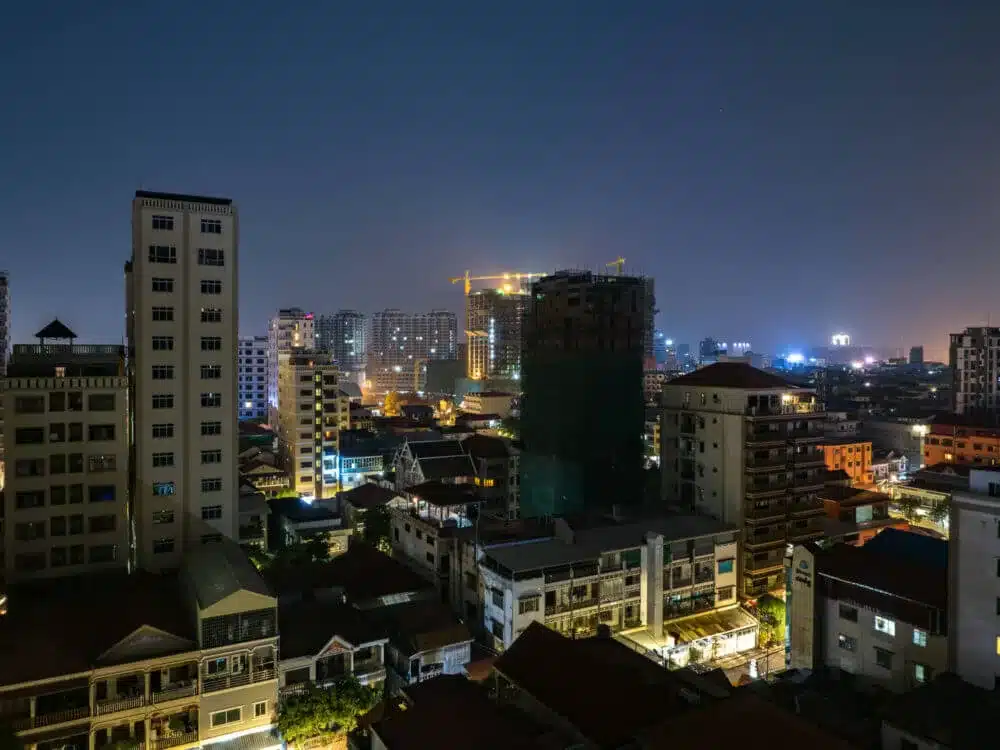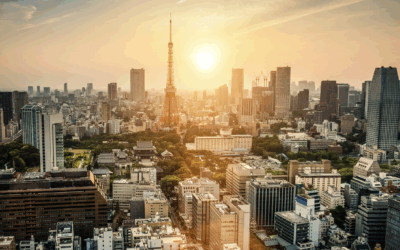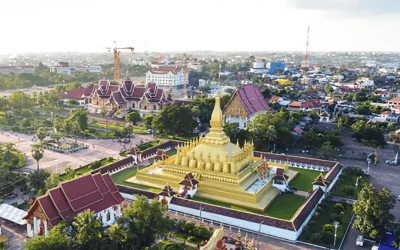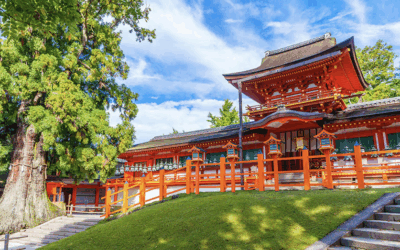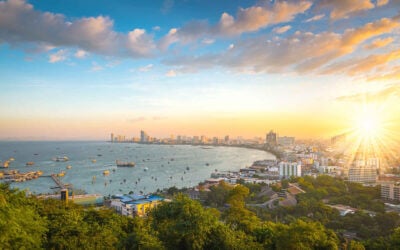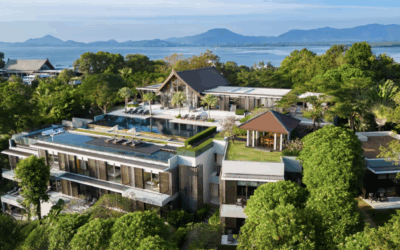Update for 2024: We’ve now entered the new year! The best countries to invest in 2024 are covered in our updated guide.
The past few years have been interesting for global markets, to say the least, and it’s unlikely that 2023 will be any different. As such, the best countries to invest for 2023 are ones with a longstanding record of growth and stability.
We’re going through a period of rapid change, and it’s now more important than ever to diversify your portfolio internationally.
Oftentimes, people will ask “are we about to enter a recession?”. The answer to that question depends on which country you live and do business in.
Rising interest rates are prevalent worldwide and borrowing costs will continue soaring well into 2023. Meanwhile, inflation will play a major role in which countries you’re able to effectively invest in.
Yet not every place will be affected in the same way – or to the same degree. Each country’s inflation rate is different while supply chain disruptions aren’t as prevalent in some parts of the world.
Several emerging markets in Southeast Asia have a long history of avoiding recessions. In fact, two of the countries on our list haven’t had a recession for over 25 years.
The five countries we’ll cover in this article don’t all share the same benefits. Nowhere is 100% perfect and we recommend each market for a different reason. The perks of investing in a stable, developed economy such as Singapore aren’t the same as if you’d invest in Vietnam, for example.
With that said, each of the markets listed below can claim a multi-decade history of outperformance in the face of global economic uncertainty.
Here are Asia’s five best countries to invest in 2023 in no particular order.
Cambodia
Consistently ranked among the world’s fastest growing countries for the past two decades, Cambodia has made enormous progress towards its economic and social development since the 1990s.
Today, Cambodia is now one of Southeast Asia’s most welcoming countries toward foreign investment.
While still underdeveloped compared to Southeast Asia as a whole, Cambodia is one of the best frontier markets to invest in. It’s also more likely than its peers to make a quick transition into an industrialized economy.
See, when a country transforms from a frontier market into an emerging market (and then hopefully into a fully-developed nation) it often needs a catalyst to start the economic growth process in the first place.
The presence of oil greatly helped both Malaysia and Brunei. Similarly, a strong tourism sector aided Thailand along its path of economic development.
Cambodia also gains immensely from a constant flow of foreign tourists, and unlike most other frontier markets in the world, it benefits from being part of a well-established tourism trail.
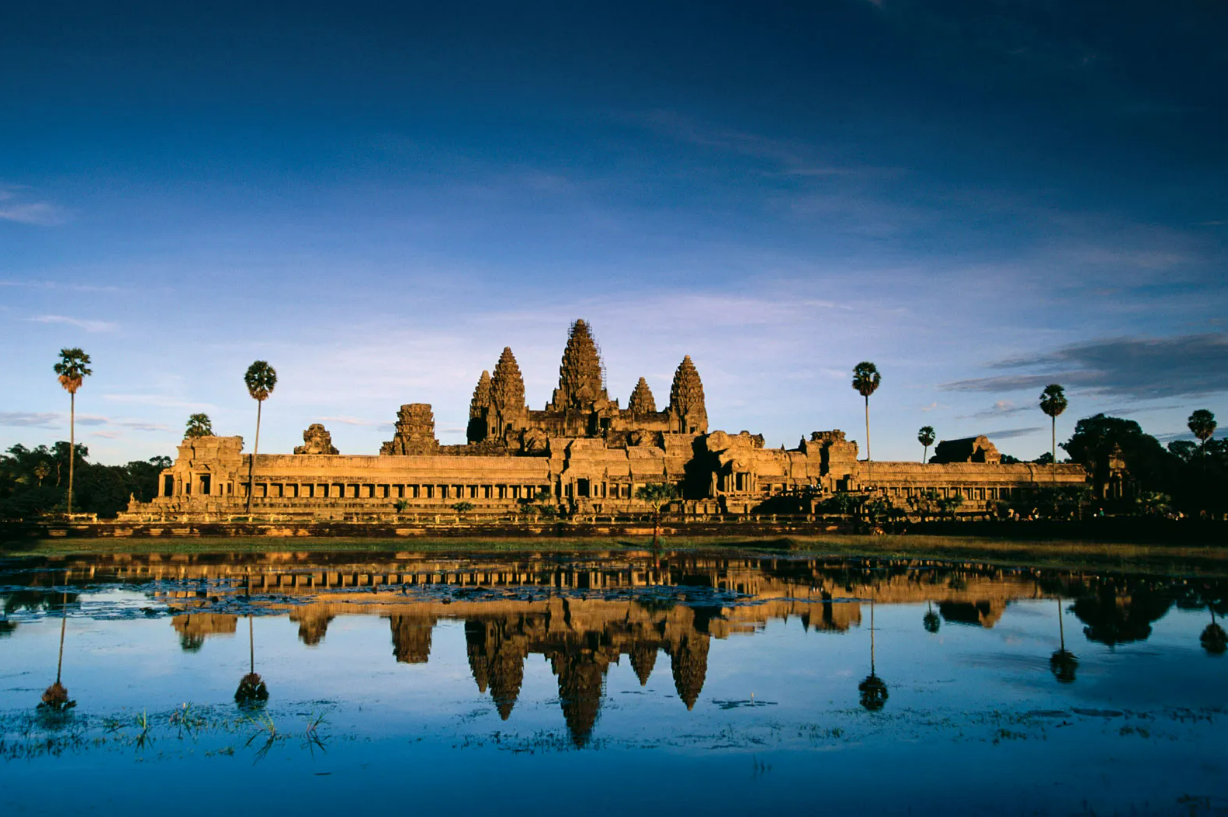
Built during the 12th Century, Angkor Wat is the world’s largest religion structure and former capital of the Khmer Empire. It brings millions of tourists into Cambodia during a normal year.
Simply put: Cambodia’s assets mean there’s less downside risk and more upside potential compared to other frontier markets. Places like Bangladesh or Papua New Guinea, for example, simply don’t have anything on the sale scale as Angkor Wat.
A robust tourism sector, which is in turn helping to create other industries, is why many analysts think Cambodia’s transition into an emerging market will look similar to Thailand’s development during the 1980s and 1990s.
Cambodia’s economy doesn’t just rely solely on tourism either, and they’re steadily moving up the value chain away from garments and towards higher-cost products.
Most recently, Ford just announced plans to build a factory just outside the city limits of Phnom Penh. 7-Eleven has also opened dozens of convenience stores in Cambodia over the past year, and they expect to operate 500 stores by the end of 2025.
To anyone who has ever traveled across Asia: surely you understand the significance of 7-Eleven setting up shop.
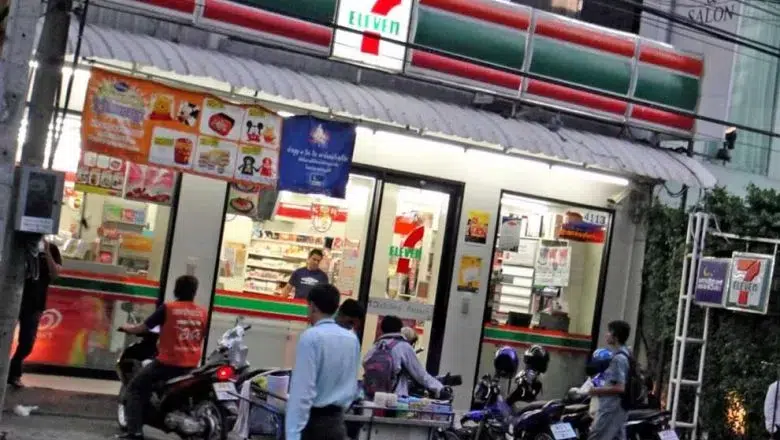
A newly-opened 7-11 Store in Cambodia. Them, and their competitors, have already bought out any viable alternatives.
Singapore
Moving toward the complete opposite end of the “economic development ladder”, Singapore is one of the wealthiest nations on earth with a GDP per capita that exceeds US$70,000.You won’t find high rental yields here – they’re about 3%.
Likewise, capital appreciation prospects are minimal. Real estate prices in Singapore are already among the world’s most expensive at US$20,000 per square meter.
Singapore brings certain a type of safety and stability which is difficult to find elsewhere in the world though. It’s a wealthy nation in the heart of Asia, attracting UHNWIs from China, India, and beyond. Tax incentives and lifestyle opportunities alike are luring entrepreneurs from around the world to Singapore.
Therefore, you’ll find it natural that investing in Singapore’s property market doesn’t have a low entry price. You should expect to pay at least US$15,000 per square meter for real estate in a prime location like Orchard or Marina Bay.
As a foreigner, you can own condo units and other kind of strata-titled property under your own name in Singapore. Non-citizens aren’t allowed to own freehold land or houses in Singapore though, at least not apart from exceptional circumstances.
It’s possible to apply under the Foreign Ownership Act to own freehold land, although a requirement is having made an “exceptional economic contribution to Singapore”. It’s understood that this translates to an investment into the mid-eight figure range, and is subject to change.
Singapore is unofficially the financial center of Southeast Asia, and because of this, you can access many opportunities by opening a brokerage account and trading stocks here.
By having a brokerage account in Singapore, you aren’t merely obtaining access to stocks in the city-state itself. It also gives you access to other countries in Asia.
For example, the CapitaLand India Trust (SGX:CY6U) is one of few ways invest in India’s property market as a foreigner. This Singaporean-listed REIT owns eight IT and logistics parks which span several major cities including Mumbai, Hyderabad, and Pune.
Vietnam
It’s common knowledge that China’s economy is slowing down. This trend will continue in 2023, and Vietnam will be a major beneficiary of its larger neighbor’s loss.
Part of the reason why Vietnam stands to gain from China’s capital flight is that they share a border. This makes it easier to relocate supply chains compared to the Middle East or Latin America, for example.
Moving your business from China to Vietnam doesn’t come with the same logistical, cultural, or financial difficulties compared to the alternatives.
Plus, Vietnam is significantly cheaper and easier to do business in than most its competitors – especially in the manufacturing sector. That’s why Samsung, LEGO, Adidas, and dozens of other multinational firms are setting shop here.
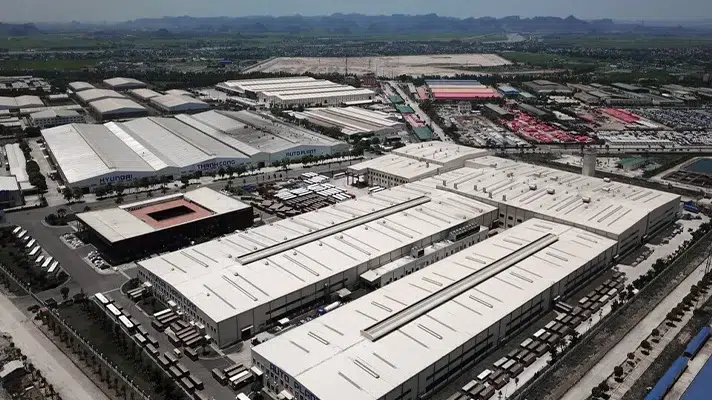
Manufacturers from around the world are investing in Vietnam. One of the most recent cases is Hyundai, which is opening its second factory south of Hanoi.
Keep in mind that buying property isn’t the best way to invest in Vietnam since you can’t buy land on a freehold basis. Or for that matter, any structure that sits on the land such as a condo unit or house.
That’s because every title in Vietnam is on technically a long-term lease from the government. Meanwhile, foreigners can only own land rights for 50 years at a time. The sole exception is for embassies and diplomatic institution which can lease land for 99 years.
Several years back, there were proposals for Vietnam to extend the leasehold period to 100 years or longer. It appears these talks have quietly gone away, meaning you should expect Vietnam’s land ownership rights to stay difficult.
Vietnam is a great place to invest. However, you probably shouldn’t buy real estate here – consider focusing on business opportunities here instead.
Besides flying to Southeast Asia and either opening a brokerage account or starting a business in Vietnam, the easiest ways to invest in Vietnam is through an exchange traded fund (ETF).
The two largest Vietnam ETFs are Vietnam Enterprise Investments Limited (LON:VEIL) which is traded in the United Kingdom, and Vaneck Vectors Vietnam (NYSEARCA:VNM) in the United States. Each of these ETFs provides broad (but not strategic) exposure to Vietnamese equities.
Malaysia
If you’re looking to easily buy land as a foreigner, Malaysia is certainly the best option in Southeast Asia.
Generally, foreign investors have the same land rights that local citizens enjoy in Malaysia. There are a few minor restrictions that wouldn’t apply to most people. For example, only locals can buy agricultural land or historically-significant property in Malaysia.
The good news is: besides the minimum price of RM500,000 (about US$120,000) and a few other rare cases, foreigners can own freehold rights to nearly all types of landed real estate in Malaysia including houses, villas, mansions and even office buildings.
Better yet, it’s easy to get a long-term visa and use part of it to invest in Malaysia’s property market. The Malaysia My Second Home (MM2H) is one of the most popular investment residence programs in Asia.
Part of the RM1 million in total, or approximately US$225,000, needed to qualify for the MM2H program can later be withdrawn and invested in real estate. This amount could be considered a “lump sum” to obtain residency in Malaysia.
Alternatively, the Malaysian government also introduced new visas in 2022 aimed at high-income businessmen and retirees. Costs of this new visa program, named the Premium Visa Program (PVIP), is based on income rather than a “lump sum” investment as required to qualify for MM2H.
Malaysia’s Premium Visa Program (PVIP) requires net income of RM40,000 (about US$9,000) per month along with an RM200,000 (approximately US$40,000) donation and is valid for 10 years as opposed to the MM2H program’s 10 years.
The Philippines
Demographic trends are very much in the Philippines’ favor – even more than elsewhere in Asia. This archipelago of around 7,641 islands is home to over 110 million people and quickly rising.
Furthermore, the average age in the Philippines is only 25 years old. This is among the lowest in Asia.
Population growth naturally leads to an increased demand for prime real estate over time. Simply put: a greater number of people means a larger pool of buyers. The Philippines’ young, educated workforce will continue to drive its economic growth well into the future.
It isn’t just population growth by itself that will drive demand in major cities either. The Philippines’ urbanization rate is 48% and growing, which necessitates a large number of people moving from rural areas into the city over the long-term.
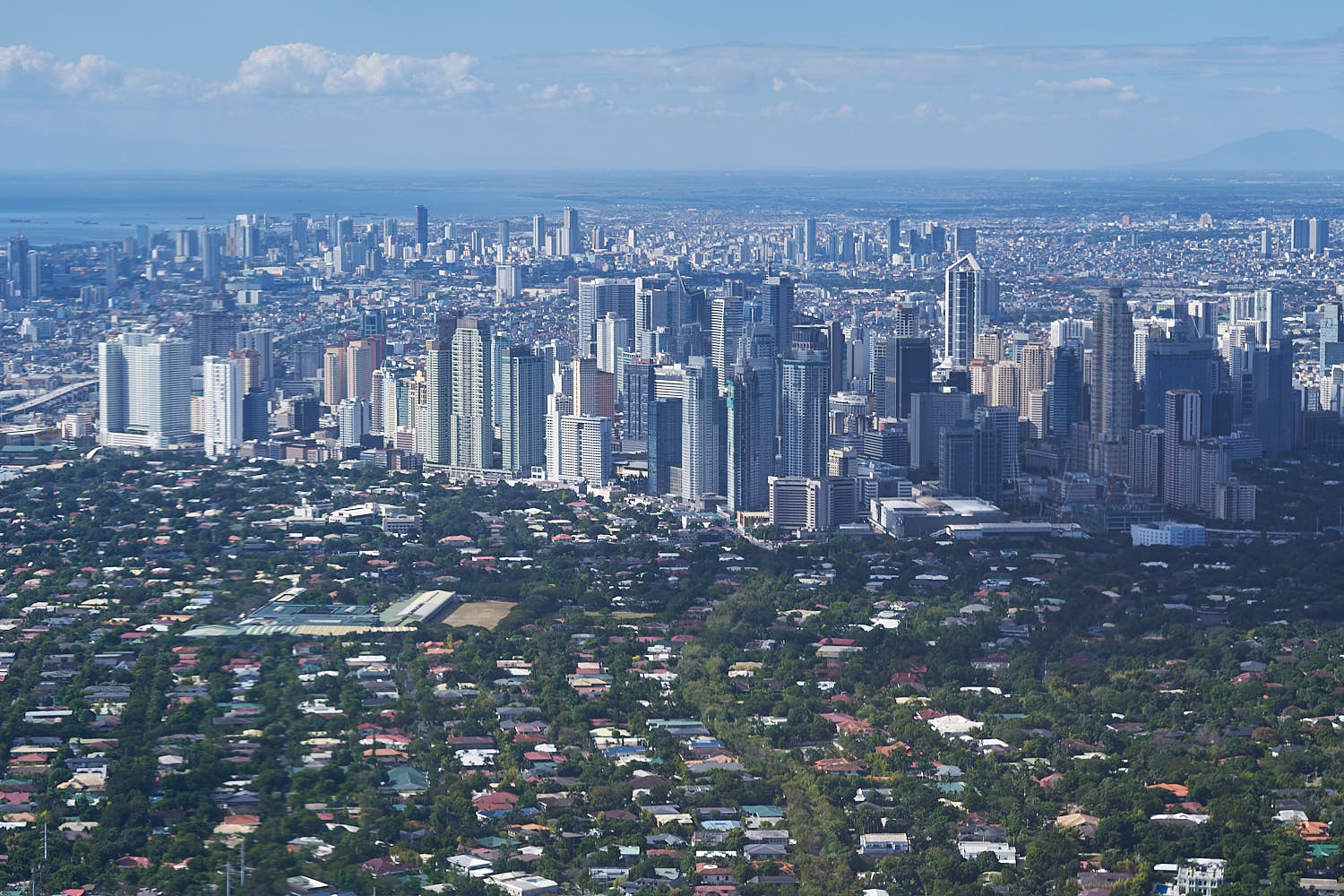
By some metrics, Manila is the 4th largest metropolitan area in the world with a population of 25 million.
Based simply on its demographic realities, The Philippines’ immense population growth combined with its ongoing urbanization will mean a stronger demand for prime real estate over time.
The economic whims of the global economy will come and go. It’s difficult to predict how any given market will perform over the long-term. Yet demographic trends are about as close as we can get – statistics such as urbanization rate and population growth are nearly impossible to change once set in motion.
As such, the best countries to invest in 2023 are those with robust demographic trends and a history of avoiding recession.
Skip the Next Western Recession
Learn the best places to invest - and where to avoid - by downloading our free Investment Cheat Sheet.

